Web navigation is something you don’t even notice until you get lost on a website or get annoyed by the website menu sliding out and blocking the content. Yet, the absolute majority of consumers admit that easy navigation is the most useful website feature.
Contents:
So let’s see what makes navigation in web design so important, what its best practices are, and when new website navigation trends are there to make your site function better, and when they are not.
Why web navigation matters so much in design
What is web navigation? Everyone knows it, but many underestimate it. Sometimes people who plan on making a business website, concentrate mainly on the content. But the truth is, most of today’s users are not looking for content. They’re using your website to swiftly navigate to the products or services they want.
There I was choosing some cat food on the local pet shop website. Okay, Cat => Dry Food => Choosing a brand => Out of stock => OK, back => A pop-up banner with some special deal => Click on Conditions => Shipping and delivery… How did I end up here and where the hell was I supposed to go? And the logo didn’t even lead to the front page!
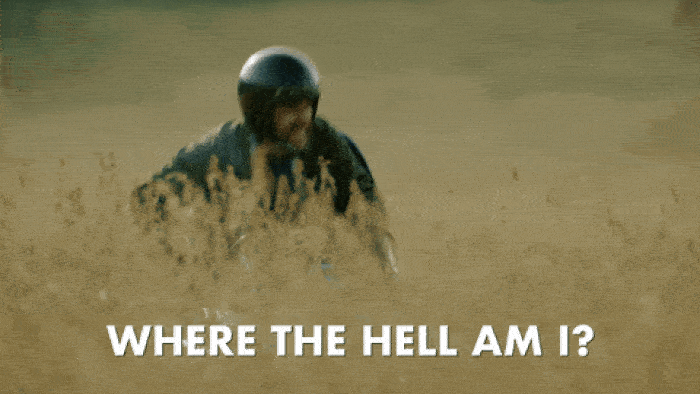
Image via giphy.com
That’s one of the natural consequences of bad site navigation design. The ultimate goal of any page is to turn leads into customers. That is why navigation mistakes are expensive. Poor web navigation will result in fewer users. Website navigation is fundamental to UX design. Good navigation amplifies usability. As stated in the latest survey, people spend around 53 seconds on a web page. You have this little time to catch the attention!
Arm yourself with the knowledge to avoid making common mistakes and revitalize your website to compete with others. This article will show you some fresh designs and web navigation ideas and also cases when you’d be better off not using them.
Best practices for website navigation
A website that’s easy to browse provides users with quicker and more efficient access to the content they want. People like spending their time on a website with an unambiguous menu structure that makes it easy to maneuver between pages without straining their brains and eyesight. They might even enjoy it. Here are the safest navigation principles and elements you might want to consider before deciding which new pattern to choose.
Consistency
The menu should be present on every page and in the same place so your users would be able to find their way around with ease, no matter the subject. In a recent survey, 37% of users will leave a site that is difficult to navigate. That’s a bummer.
A consistent navigation system helps navigate the website, even if it is in Chinese. See the familiar pattern below?
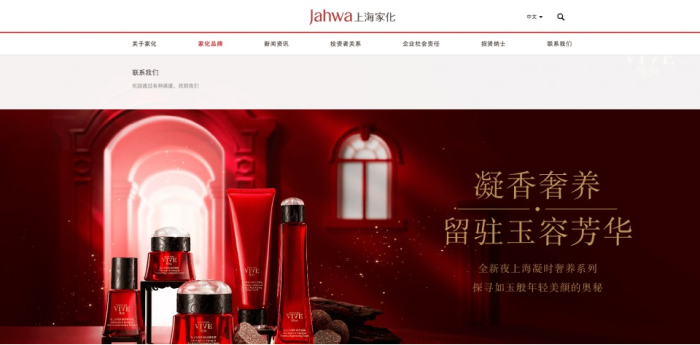
Shanghai Vive cosmetics company
Hamburger menu
Yes, we all well remember the Hamburger menu controversy from distant 2014. Like it or not, the hamburger menu is a useful instrument. It makes the UI cleaner. It’s recognizable. Remember those two or three lines in the corner of the screen which when clicked will provide you with a menu? This is it. It presents users with direct access to the pages they want without proceeding through all the stages in some predefined order.
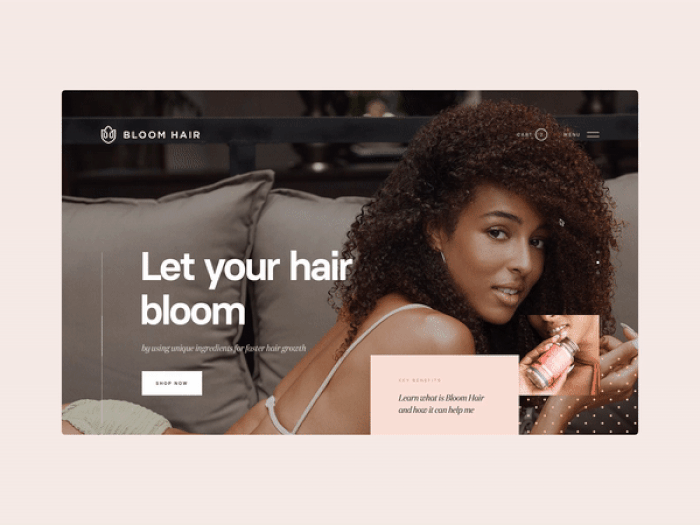
Hamburger Side Menu by Lukas Majzlan
Simplicity and conciseness
The more concise your navigation is, the more home page authority will flow to interior pages. It makes them more likely to rank well in the search engines. In other words, it’s good for your website’s SEO. In a study conducted by BrightEdge, they found that 51% of all website traffic comes from organic search. That’s 51% of your potential customers.
Also, being the engine that drives your website, your navigation should be predictable and simple. Navigation is like your site’s skeleton. It better be strong and healthy.
Accessibility, usability, and inclusion
Accessibility, usability, and inclusion are key principles if you want to show appreciation to all categories of your users through web navigation design. Inclusive design, closely related to human-centered design, means creating web platforms that work for everyone. Accessibility, usability, and inclusion goals, approaches, and guidelines overlap significantly. We recommend addressing them together when designing and developing websites and applications.
These 3 principles will conquer neumorphism, a new interpretation of skeuomorphism in design, once and forever. Neumorphism, a minimalist style of web navigation, lacks contrast and differentiation. It makes web platforms almost impossible to navigate. Just look at this:
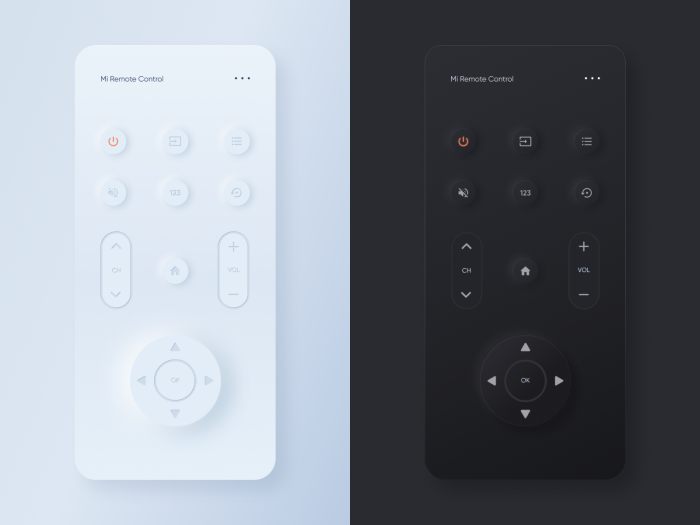
Mi Remote Control Mobile app by Igor Erema
More than 2.2 million people have vision impairments. Websites and apps with web navigation in neumorphism make it hard to navigate through frames if you have reduced vision, the shadowed elements erase borders between buttons.
Accessibility, usability, and inclusion in design aren’t just important for people with disabilities, because each of us can encounter situational difficulties with our vision. Bright environments interfere with screen visibility, and neumorphism is hard to read in environments like that.
Check out this work to get a better understanding of accessibility. Ranjith Manoharan decided to add labels to icons for old-timers and first-time phone users:
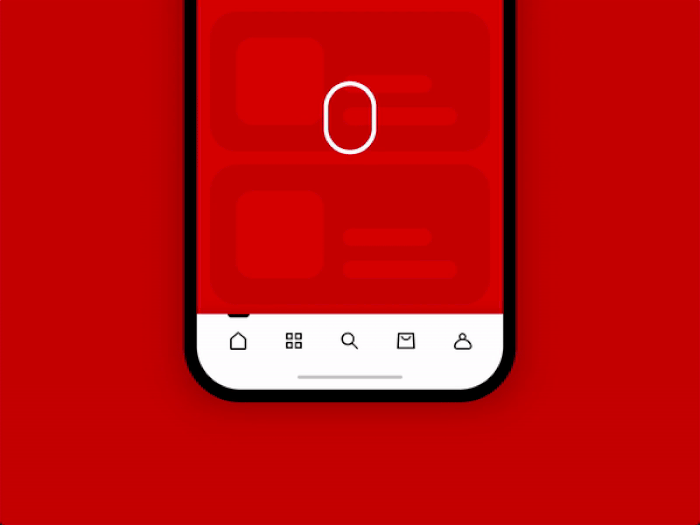
“It would be helpful to show them the intended functionalities of the menu icons at least for the first time.”
Patterns
Originality is great but be wary on this point when you design a navigation structure. You don’t want to reinvent the wheel here. At least, not too much. There are certain web conventions and the reason they exist is that they work. People are used to them. As Steve Krug once said, “Don’t Make Me Think”. Don’t make your users think too much and get frustrated.
Then again, it’s a great idea to sometimes go against the flow when done right. The reason for this article’s existence is to entertain this possibility.
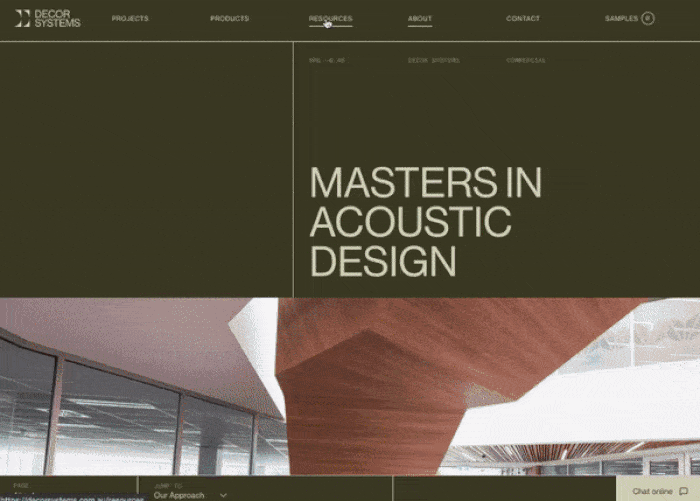
Decor Systems – Mega menu on Awwwards
“I may not have gone where I intended to go, but I think I have ended up where I needed to be.”
― Douglas Adams, The Long Dark Tea-Time of the Soul
It’s your tricky job to locate an exact point where the two intentions connect. Users end up exactly where they feel like they need to be and where you need them to be to reach your goals in business.
Edgy navigation trends (with examples)
Now let’s see what the current website navigation trends are and what features can you use to freshen up your website and make it more functional.
Fixed web navigation bars
This is a type of site navigation where the menu bar is “glued” to some part of the screen (usually the top, though there are also some sticky footers out there). It doesn’t disappear when you’re scrolling down and provides access to the menu at all times.
This type of navigation is universal and well-liked by users of all ages. It’s accessible from anywhere and increases brand awareness if it contains the company’s logo, and improves SEO as users tend to view more pages for a single visit. It also grants visitors the ability to move around the website quicker and easier which is also good for them and as a result, for your website’s rankings in Google.
What can go wrong
Sticky navigation is fine but make sure it doesn’t block any content, especially on mobile. It also isn’t the right fit for websites where there isn’t much scrolling to be done in the first place.

Ascensión Latorre Furniture
Vertical sliding navigation
As opposed to horizontal one, vertical navigation is better for phones and tablets and gives more free space for the menu. The expandable nature of this type of navigation menu makes it a perfect choice for e-commerce websites. It also can make something of a difference if your competitors all sport horizontal navbars and may provide an easier, more scannable way of perceiving info for the audience used to the F-shaped reading pattern.
What can go wrong
If the website menu or even some of its title options are too long, some parts of it may get cut off or it can happen to occupy too much screen space. Users of laptops and desktop computers may potentially get tired of moving to and fro from the scroll bar for the menu across the screen. Also, vertical menus get less attention and clicks in comparison to horizontal ones.
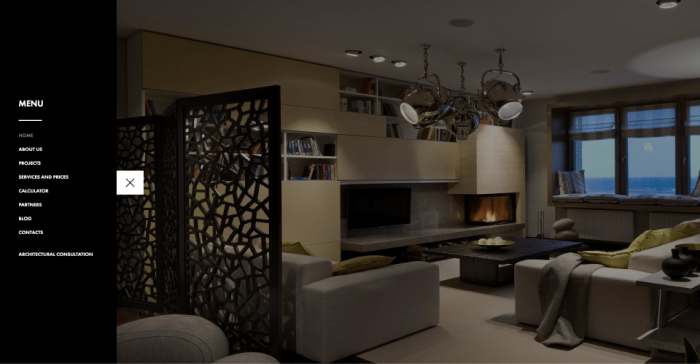
Sokruta Interior Design Studio
Fullscreen navigation
Make navigation a design element by itself? It can be a cool and stylish choice, taking into account the popularity of the large typography trend in web design. It’s great for mobile, it very clearly defines the main sections of a website, and it’s straightforward and creative at the same time.
What can go wrong
Navigation so large has to be hidden behind a click which is an additional hurdle on a user journey.

EAGLE FILMS
Subtle animation
This point is about visual appeal and elegance, and not usability (though beauty can be practical too, a lot. Check this article on functional aesthetics. Look at how this motif works in the good website navigation example below. That’s like adding a carefully selected accessory to your usual look. It adds glamor and charm and also makes the whole concept more lively and fun.
What’s more, it draws a visitor’s eye exactly where you want it to be. A simple yet very powerful technique of attention control.
What can go wrong
“Subtle” is the key! When not done properly, animation can distract users and even prevent them from navigating your site. Before adding an animation, ask yourself if it serves a purpose on the page. Here are some useful thoughts on the subject of meaningful animation.
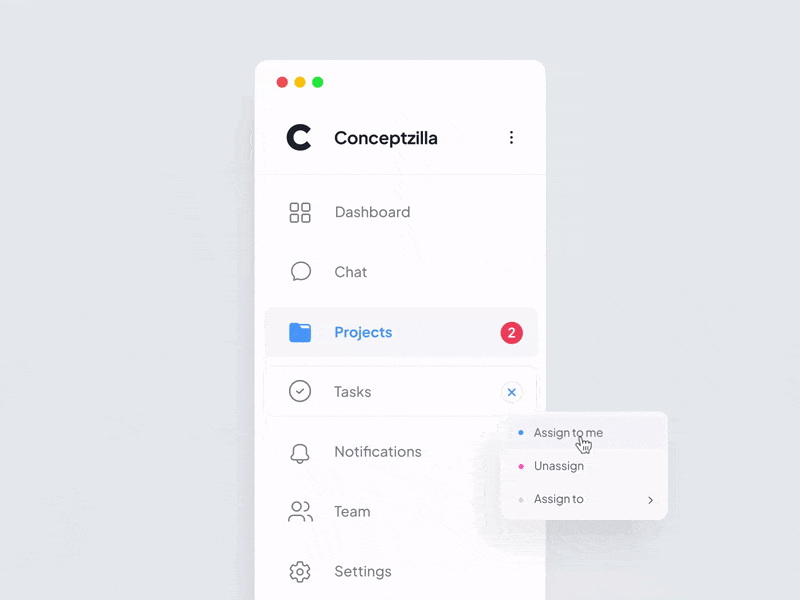
Sidebar Microinteractions by Conceptzilla
This or that/Four corners
This is a clean and beautiful idea. Try to divide users’ attention in two or four directions. It’s simple and a user doesn’t get dumped with a gazillion options to choose from. By limiting your user’s choices, you can make your website easier to use and promote its conversions.
What can go wrong
This may only be a viable option for websites with limited content. What’s more, users are not very well accustomed to this kind of navigation yet and might get confused and distracted.
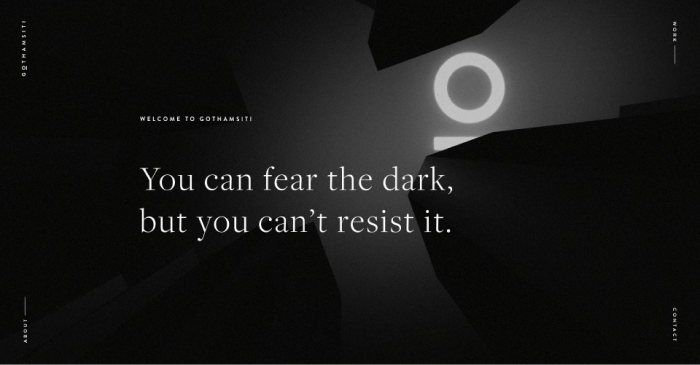
Gothamsiti Digital Agency
Single page navigation
This web navigation trend is among the most popular nowadays. It’s great for websites with lots of visual content, it grabs attention, it’s great for phones (it owes its popularity to the rising usage of mobile phones in the first place), and it lets you control the narrative. And scrolling is easier than clicking.
You don’t have to worry about overcomplicating things if you choose a single-page option for your website. Some designers even call it “no navigation”.
What can go wrong
Single pages have some drawbacks with SEO – they are generally supposed to be designed around one main concept, which limits your ability to rank for a wide variety of keywords. It also gives less freedom to the user as they are stuck with the necessity to get the information only in some particular predefined order.

Web and interaction design by Vilius Vaicius
Bottom navigation
This is another part of the thumb-friendly web navigation trend. Well, not just any trend. It’s now essential. It became just as important as responsive design. Bottom navigation is easier to reach with your thumb, it’s clean and leaves more space for the content
What can go wrong
The bar takes up too much space on the screen. The other problem stems from the previous one. As a workaround, designers can make the text too small and indiscernible.
Bottom navigation is also something the majority of your users won’t expect on a desktop, which may add to their confusion.
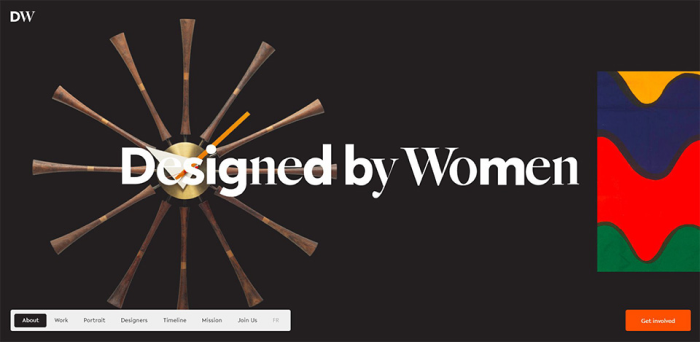
Designed by Women
Fat footer
Another bottom of the screen element. A standard footer usually contains a small amount of information like contacts, copyright notices, social media icons, and a few links. A fat footer contains far more useful information. It can sometimes serve as a secondary or even primary menu giving users hints as to where to go next, extending the website’s functionality. A fat footer is also an excellent opportunity to showcase more of your brand’s distinctiveness in website navigation design.
What can go wrong
Actually, few people ever notice footers. More content also means more time for page load.
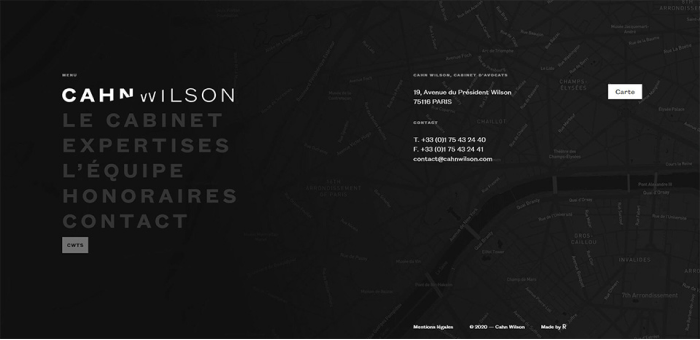
Cahn Wilson
Experimental navigations
As a web design agency, we’ve found out that going against the trend can become a UI/UX trend itself. Experiments of all kinds are in vogue and becoming more and more popular. Designers make web navigation the main part of website design and its focal point. Even going as far as to make it represent the design itself. This kind of navigation guarantees a well-defined page structure and gives a lot of free space for creative ideas. On top of that, it is mobile-friendly.
What can go wrong
Again, use originality with caution, users may not be prepared for some of the most modern design ideas. Besides, it lowers loading time.

Polymachine 3D architectural visualization and rendering studio
Incorporating advanced technology
The evolving internet landscape has led to the incorporation of advanced technology in web design trends. These trends include AI-generated art, metaverse-driven VR experiences, and cinematic techniques. Immersive 3D worlds and animated product reveals are utilized to engage users. Overlapping text, scrapbook aesthetics, and cinematic elements are used to create engaging and visually appealing experiences.
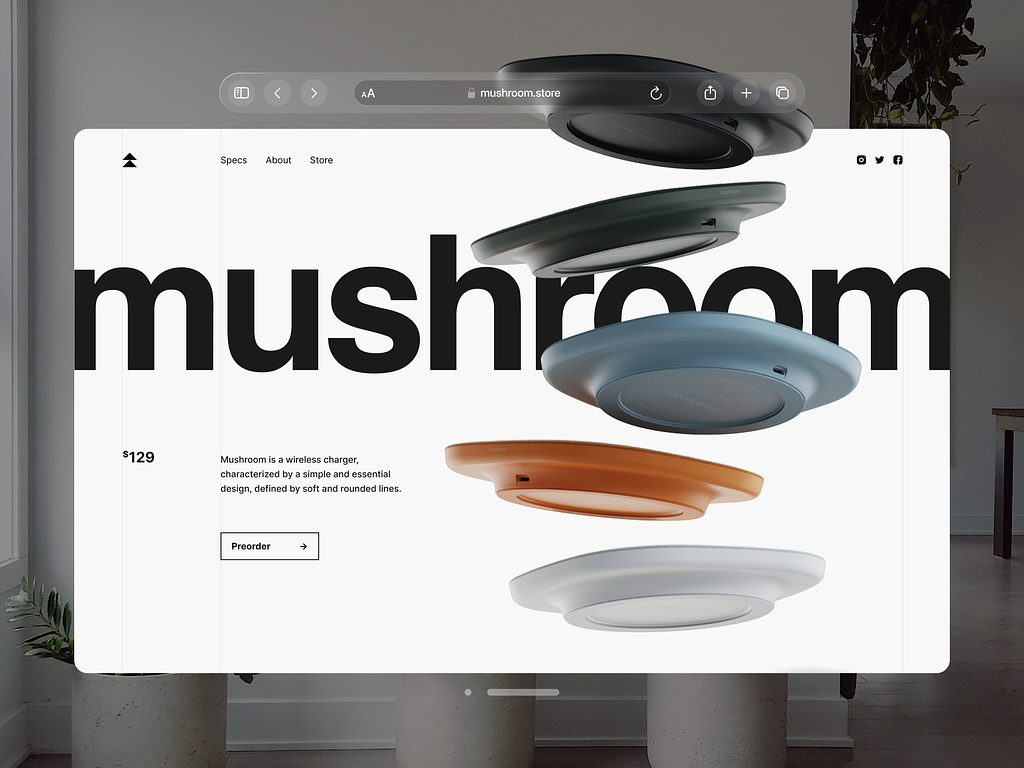
Apple Vision Pro Spatial Design Exploration by Shakuro
In conclusion
There are over 1.13 billion sites on the web today. And although only 10-15% of them are active, the number is still massive. In today’s global marketplace, it’s not enough to have a presence on the web. To capitalize on this opportunity and get real customers, a website must offer an engaging and robust user experience.
The website navigation design has to be impeccable. There’s no other way around it. Implementing the right navigation setup for your mobile and desktop sites can transform your UX and boost business. So great and well-thought-through web navigation is a way to avoid major UX troubles afterward. Still, apart from making it sound, you can also spice it up a little with some trending flares of modern web navigation listed above. The important thing is to make sure it fits.
If you have any questions on the subject of trends in web navigation design (or any other design-related subject for that matter), don’t hesitate to get in touch with a professional and experience-backed team of designers.
* * *
This article about the latest website navigation trends was originally published in October 2019 and was updated in August 2023 to make it more relevant and comprehensive.
